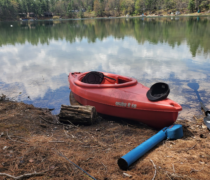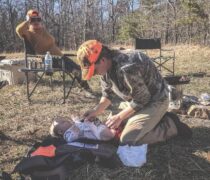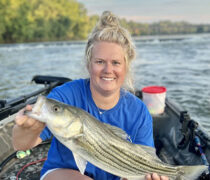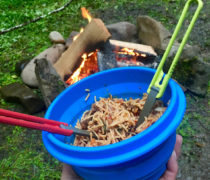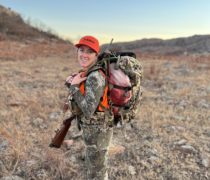Take the Lead on Lead
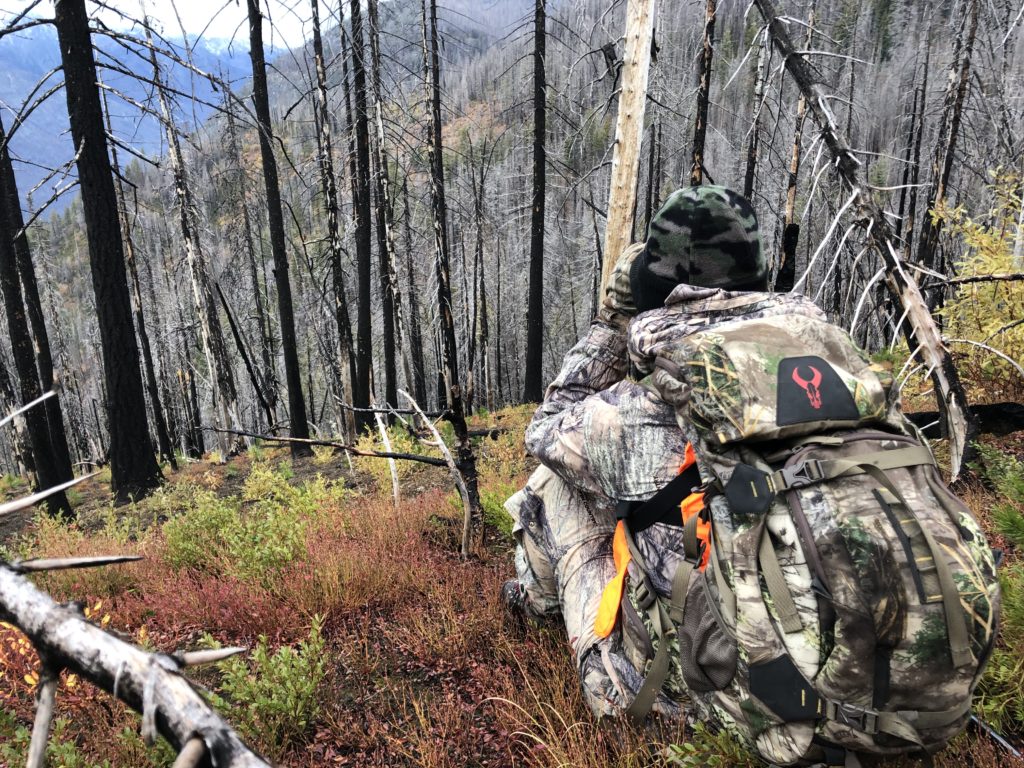
By: Kodi Jo Jaspers
My hunting gene runs deep; I was born into a family with a long history and tradition of pursuing wild game. I cherish the memories I have with my dad up in the high country of the Cascade Mountains learning how to read a sign and follow what the habitat and animals were telling me. It was in these moments that my passion and connection to the natural world and wildlife was shaped in a way which led me to a career in wildlife conservation. As a biologist and hunter, I see the importance of the hunting heritage of this country and pride myself in continuing to be a part of this community.
“These non-game species play vital roles within our diverse ecosystems.”
One thing the hunting community has taught me is the importance of conserving our lands and the wild creatures found within them for future generations. Through my work in biology, I have come to further understand the need to also protect species we may not hunt, but that are just as important to our landscapes, such as the bald eagle, golden eagle, common raven, and California condor. These non-game species play vital roles within our diverse ecosystems. For example, scavenge species, like the California condor, provide an important avenue for recycling nutrients. The American pika, a small mammal that inhabits alpine habitats, serves as a climate indicator species. The continued health of our landscapes depend on all species.
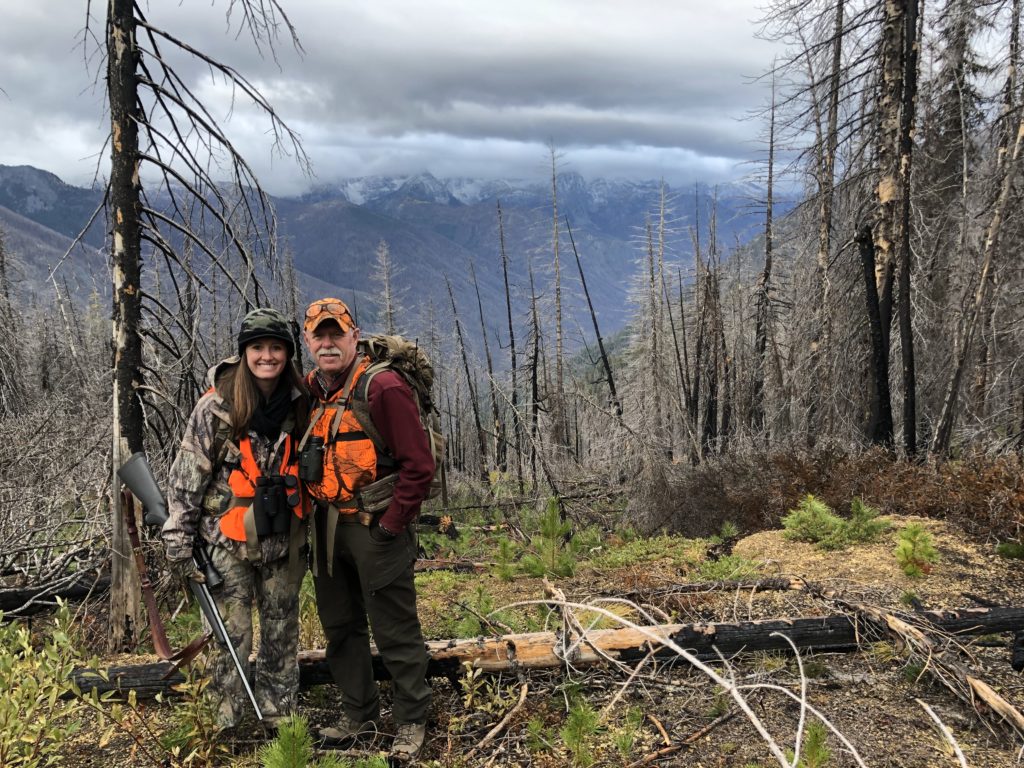
As a hunter, I hold deep respect for that motionless look in the eye of an animal I have harvested. It is never an easy aspect of the hunt for me. While working as a biologist for a Native American Tribe, seeing this look in golden eagles and bald eagles became an all too familiar occurrence. It was during this time that my perceptions as a hunter shifted drastically.
In the wake of many bald and golden eagles dying across the landscape with no obvious cause of death, I took it upon myself to help solve the mystery. Working with a local university laboratory, we determined that the majority of the eagles’ liver and kidneys showed toxic levels of lead, indicating lead poisoning likely killed these eagles. Following this result, we began researching the potential sources of lead on the landscape. We found that current research points to hunting ammunition as the leading source of lead poisoning in scavenger bird species 2,4. As a biologist, but more importantly as a hunter, I was shocked to learn that an action I was participating in could be killing eagles and other bird species.
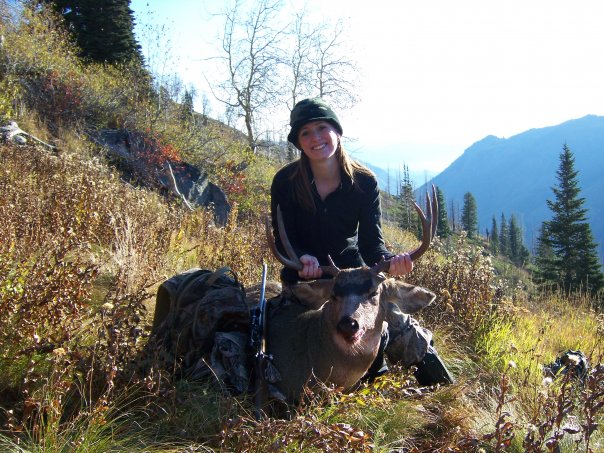
Lead bullets are intentionally made to fragment upon impact 3; it is indeed this fragmentation of the bullet that has been linked to the poisoning of species, such as eagles. Lead and lead-alloy bullets lose approximately 32% of their initial weight upon impact due to this fragmentation, and fragments have been shown to disperse up to 15 cm from the wound track 4. This same study found that 94% of deer harvested with lead bullets contained fragments, similarly 90% of gut piles also contained lead fragments 4. These gut piles are a very enticing and easy meal for scavenger species, such as a bald eagle or common raven. Studies have shown that it only takes a lead fragment the size of one shotgun pellet to cause lead toxicity in an eagle 5. Raptor species, such as eagles, are especially susceptible to this toxicity as their stomachs contain much higher acid levels. These high acid levels quickly and effectively dissolve and digest the lead, creating a swift uptake of lead in an eagle’s system 5.
It is also possible for lead fragments to wind up in your cut and wrapped wild game meat. In one study, 34% of ground venison burger contained at least one lead fragment 6. With an easy and effective alternative to lead ammunition, hunters have the opportunity to make a decision that eliminates the potential of lead within their meat source.
As a hunter committed to the preservation of the entire habitat, I am not comfortable knowing that using lead ammunition may have unintended consequences and impact wildlife beyond my intended target.
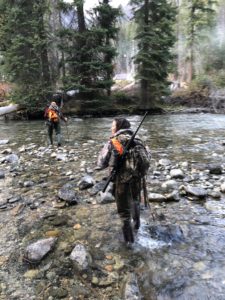
As a hunter committed to the preservation of the entire habitat, I am not comfortable knowing that using lead ammunition may have unintended consequences and impact wildlife beyond my intended target. Lead ammunition has been used in my family, just as long as it’s been used in yours; it’s a tradition, a known element in my hunting success. We’ve tested I don’t know how many bullet and powder configurations to come up with the perfect load for my big game hunting rifle. And in this last year, that testing included a lead-free copper bullet I could use with confidence, knowing I would not be unintentionally harming non-game species. My hunting partners and I were happily surprised to find that this bullet, with a little testing and the right load, performed with almost identical accuracy and precision as my previous jacketed lead bullet. With this success, I, and several individuals in my direct hunting community have, made the switch to using strictly full-copper big game bullets.
Looking deeper into the performance and accuracy of copper bullets, a study by Gremse et al. 3 showcases the effectiveness of the industry leader in non-lead ammunition. Gremes et al. 3 found that the wound track, penetration, and killing effectiveness of a copper bullet rival that of the traditional lead bullets, with little to no adverse impacts to the gun barrel. With all the potential negative impacts of a lead or lead-alloy bullet, deciding to be an informed hunter who makes educated decisions on their bullet preference is the next step in preserving our hunting traditions.
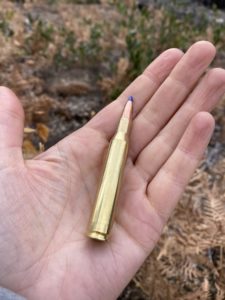
This last fall I found myself, once again, up before dawn in the bitterly cool fall morning that is notoriously Washington general deer hunting weather. It was the same as it always has been, but the biggest difference was the ammunition we all chose to load in our rifles as we took to the field: copper. Over the course of our trip we hiked our fair share of steep miles and ultimately my sister was successful in harvesting a 3 x 4 mule deer. It was my first time experiencing a kill with a copper bullet. With a single shot made at 100 yards, the deer dropped in its tracks, and I was convinced that the copper bullet would continue to be the bullet I choose to put in my rifle.
The hunting community continues to inspire me with their passion for conservation. This issue around lead ammunition is a topic I believe the hunting community has the opportunity to take the lead on. By voluntarily choosing to use non-lead ammunition in the field, we can further the traditional hunting heritage of wildlife conservation. From one hunter to another, are you ready to Take the Lead on Lead?
If you’re interested in hearing more, take a listen to the Artemis Podcast Ep 9: Livin’ That Lead-Free Life.
Happy Hunting! Kodi Jo Jaspers
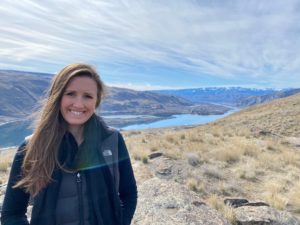
References
- (1) United States Geological Survey. (2017). Concerns Rise Over Known and Potential Impacts of Lead on Wildlife. Retrieved from: nwhc.usgs.gov/disease_information/lead_poisoning/.
- (2) Church, M. E., Gwiazda, R., Risebrough, R. W., Sorenson, K., Chamberlain, C. P., Farry, S., … & Smith, D. R. (2006). Ammunition is the principal source of lead accumulated by California condors re-introduced to the wild. Environmental science & technology, 40(19), 6143-6150.
- (3) Gremse, F., Krone, O., Thamm, M., Kiessling, F., Tolba, R. H., Rieger, S., & Gremse, C. (2014). Performance of lead-free versus lead-based hunting ammunition in ballistic soap. PloS one, 9(7), e102015.
- (4) Hunt, W. G., Burnham, W., Parish, C. N., Burnham, K. K., Mutch, B. R. I. A. N., & Oaks, J. L. (2006). Bullet fragments in deer remains: implications for lead exposure in avian scavengers. Wildlife Society Bulletin, 34(1), 167-170.
- (5) Fisher, I. J., Pain, D. J., & Thomas, V. G. (2006). A review of lead poisoning from ammunition sources in terrestrial birds. Biological conservation, 131(3), 421-432.
- (6) Hunt, W. G., Watson, R. T., Oaks, J. L., Parish, C. N., Burnham, K. K., Tucker, R. L., … & Hart, G. (2009). Lead bullet fragments in venison from rifle-killed deer: Potential for human dietary exposure. PLoS One, 4(4), e5330.
- (7) Schlichting, D., Sommerfeld, C., Müller-Graf, C., Selhorst, T., Greiner, M., Gerofke, A., … & Lahrssen-Wiederholt, M. (2017). Copper and zinc content in wild game shot with lead or non-lead ammunition–implications for consumer health protection. PloS one, 12(9), e0184946.

